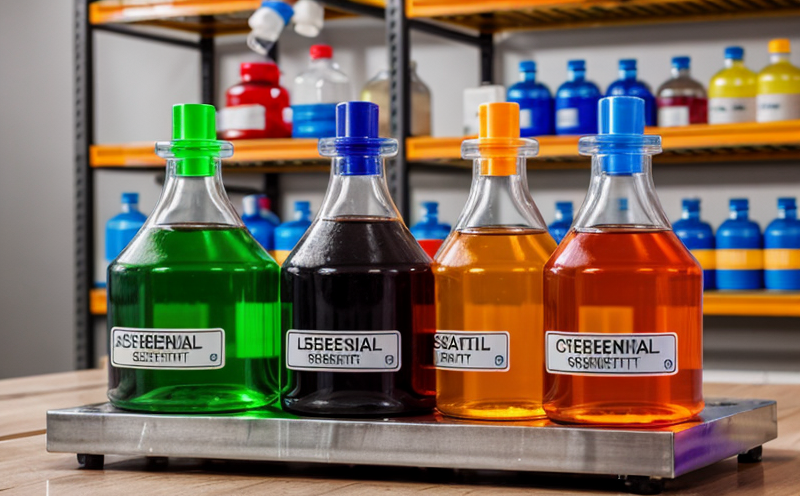Rare Earth Element Content Testing in Consumer Goods
As consumer products evolve and diversify, ensuring product safety has become a critical concern for manufacturers. Among the various elements that can impact safety is the presence of rare earth elements (REEs). REEs are essential components in many modern consumer goods due to their unique physical and chemical properties. This testing service focuses on identifying the levels of rare earth elements within products to ensure compliance with international standards and regulations.
The importance of this testing cannot be overstated, especially given the growing demand for sustainable and safe products. REEs are used in a wide range of applications including electronics, batteries, catalytic converters, and more. By conducting comprehensive rare earth element content tests, manufacturers can mitigate risks associated with potential health hazards or environmental impacts.
The testing process involves several key steps. First, the product is thoroughly analyzed to determine which REEs are present. This requires advanced analytical techniques such as Inductively Coupled Plasma Mass Spectrometry (ICP-MS) and X-ray Fluorescence (XRF). These methods allow for precise quantification of trace amounts of rare earth elements.
Once the presence of REEs is confirmed, further analysis can be conducted to assess their potential impact. This includes evaluating whether these elements fall within acceptable limits as defined by relevant standards like ISO 17025 and ASTM E691. Compliance with these guidelines ensures that products meet safety requirements set forth by regulatory bodies such as the Consumer Product Safety Commission (CPSC) in the United States.
Understanding the role of REEs in consumer goods also involves considering broader environmental implications. The extraction and processing of rare earth metals pose significant ecological challenges, including mining practices and waste management issues. By testing for REE content early in the development process, manufacturers can make informed decisions about material selection that align with sustainability goals.
In summary, our Rare Earth Element Content Testing service provides critical insights into the composition of consumer goods, helping to ensure both safety and environmental responsibility. Through rigorous analysis using state-of-the-art equipment and adherence to stringent international standards, we offer reliable data that supports informed decision-making throughout the product lifecycle.
Applied Standards
| Standard Name | Description |
|---|---|
| ISO 17025:2017 | This international standard specifies the general requirements for the competence of testing and calibration laboratories. |
| ASTM E691-13 | American Society for Testing Materials standard covering the validation of analytical methods used in the chemical analysis laboratory. |
| EN 45001:2007 | This European standard sets out requirements and guidelines for quality management systems specific to testing and calibration services. |
Benefits
Testing for rare earth element content offers numerous advantages, particularly in terms of enhancing product safety and promoting sustainability. Firstly, it allows manufacturers to adhere strictly to regulatory requirements imposed by various countries around the world. For instance, certain REEs are restricted under EU directives or banned entirely in some jurisdictions due to their toxicity.
Secondly, this testing helps identify any unintended contamination during manufacturing processes, thereby protecting consumers from exposure to harmful substances. It also enables companies to optimize resource usage by selecting materials that do not contain hazardous levels of REEs, thus reducing waste and operational costs associated with disposal.
Thirdly, conducting such tests fosters innovation within the industry by encouraging experimentation with safer alternatives without compromising performance or functionality. Lastly, it contributes positively towards corporate social responsibility efforts aimed at minimizing environmental footprints through responsible sourcing practices.
Environmental and Sustainability Contributions
The testing of rare earth element content in consumer goods plays a crucial role in supporting environmental conservation initiatives. By identifying the presence of REEs, manufacturers can take proactive measures to minimize their ecological footprint. One way this is achieved is by sourcing materials from suppliers who adhere to strict environmental regulations regarding mining and processing practices.
Furthermore, testing helps reduce unnecessary resource depletion by guiding decisions on which products should be made using recycled materials instead of virgin raw materials containing high concentrations of REEs. This approach not only conserves natural resources but also lowers greenhouse gas emissions throughout the supply chain.
Another significant benefit lies in promoting circular economy principles, where waste generated from manufacturing processes is repurposed into new products rather than ending up as landfill. Through accurate testing, companies can ensure that recycled components meet necessary safety standards, encouraging greater adoption of recycling practices across industries.





